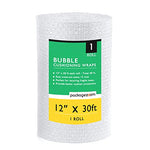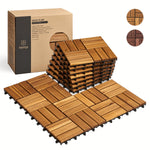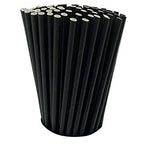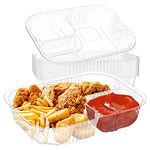You have no items in your shopping cart.
Having a well-maintained yard can significantly enhance the beauty and functionality of your outdoor space. However, yard clean up can often feel like a daunting task, especially if you're unsure where to begin or lack the time and resources to tackle the job. In this comprehensive guide, we will explore effective strategies, tips, and expert advice to help you transform your yard into a stunning oasis. From clearing debris to organizing garden beds, we've got you covered. So, grab your gardening gloves, put on your work boots, and let's dive into the world of yard clean up!
1. The Importance of Yard Clean Up
A clean and well-groomed yard not only adds aesthetic appeal but also provides numerous benefits for both you and the environment. Here's why yard clean up is essential:
Benefits for You:
Maintaining a tidy yard offers several advantages for homeowners:
-
Enhanced Curb Appeal: A well-kept yard improves the overall appearance of your home, creating a positive first impression for visitors and potential buyers.
-
Increased Property Value: A beautiful and well-maintained yard can significantly boost the value of your property, making it a worthwhile investment.
-
Improved Outdoor Living: A clean and organized yard provides a pleasant outdoor space for relaxation, recreation, and entertaining friends and family.
Benefits for the Environment:
Yard clean up also benefits the environment in several ways:
-
Preventing Pollution: Regular yard maintenance helps prevent the accumulation of debris, leaves, and other pollutants from entering water bodies, reducing the risk of water pollution.
-
Promoting Biodiversity: Proper yard care, including pruning and removing invasive plants, promotes the growth of native species and supports local wildlife populations.
-
Reducing Pests and Disease: Regular yard clean up minimizes the presence of pests, such as rodents and insects, and helps prevent the spread of plant diseases.
2. Getting Started: Preparing for Yard Clean Up
Before you dive into the actual yard clean up process, it's essential to prepare adequately. Follow these steps to ensure a smooth and efficient start:
Step 1: Assess Your Yard
Begin by assessing the current state of your yard. Take note of any areas that require immediate attention, such as overgrown shrubs, fallen branches, or weed-infested flower beds. This evaluation will help you prioritize tasks and plan accordingly.
Step 2: Gather Essential Tools and Supplies
To streamline your yard clean up, gather the necessary tools and supplies beforehand. Here's a checklist of items you may need:
- Rakes and leaf blowers
- Pruning shears and hedge trimmers
- Wheelbarrow or garden cart
- Lawnmower and weed trimmer
- Garbage bags or bins for debris disposal
- Protective gear, including gloves and goggles
Step 3: Develop a Yard Clean Up Plan
Creating a plan of action will help you stay organized and focused during the clean up process. Divide your yard into sections and determine the tasks required for each area. Consider allocating specific time frames or days for each task to prevent overwhelm.
3. Yard Clean Up Techniques and Tips
Now that you're ready to tackle the yard clean up, let's explore effective techniques and tips to maximize efficiency and achieve outstanding results:
3.1 Clearing Debris
Clearing debris is often the first step in yard clean up. Follow these tips for efficient debris removal:
- Rake or Blow Leaves: Use a rake or leaf blower to gather fallen leaves into piles for easier disposal.
- Remove Fallen Branches: Collect and dispose of any fallen branches or twigs that may litter your yard.
- Clean Gutters: Ensure gutters and downspouts are free from leaves and debris to prevent water damage.
3.2 Pruning and Trimming
Proper pruning and trimming help maintain the health and appearance of your trees, shrubs, and plants. Consider the following:
- Remove Dead or Diseased Branches: Prune away dead or diseased branches to prevent the spread of decay and improve the overall health of the plant.
- Shape Shrubs: Trim shrubs into desired shapes, ensuring they don't obstruct walkways or windows.
- Cut Back Overgrown Plants: Trim back overgrown plants to encourage healthy growth and prevent crowding.
3.3 Weed Control and Garden Bed Preparation
Weeding and preparing garden beds are crucial for promoting plant health and aesthetic appeal. Follow these steps:
- Remove Weeds: Pull out weeds by hand or use a weeding tool to eradicate them from your garden beds.
- Add Mulch: Apply a layer of mulch around plants to suppress weed growth, conserve moisture, and enhance soil health.
- Amend Soil: Before planting, consider adding compost or organic matter to improve soil fertility and structure.
3.4 Lawn Care and Maintenance
Achieving a lush and vibrant lawn requires regular care and maintenance. Consider the following lawn care tips:
- Mow Regularly: Keep your lawn at the appropriate height by mowing it regularly, ensuring not to cut more than one-third of the grass blade at once.
- Water Wisely: Water your lawn deeply and infrequently, preferably in the early morning, to promote deep root growth and reduce water waste.
- Fertilize and Control Weeds: Apply appropriate fertilizers and weed control products to keep your lawn healthy and weed-free.
4. Frequently Asked Questions (FAQs)
FAQ 1: How often should I clean up my yard?
Answer: The frequency of yard clean up depends on several factors, including the size of your yard, the time of year, and the specific maintenance requirements. However, it is generally recommended to perform a thorough yard clean up at least once in spring and once in fall.
FAQ 2: Can I compost the yard waste?
Answer: Yes, yard waste such as leaves, grass clippings, and small branches can be composted. However, avoid composting diseased plants or weeds with seeds to prevent the spread of pests or diseases.
FAQ 3: Should I hire professional help for yard clean up?
Answer: Hiring professional help for yard clean up can be beneficial, especially if you have a large or complex outdoor space, lack the necessary tools, or are unable to perform physical labor. Professional landscapers can efficiently handle the task, saving you time and effort.
FAQ 4: What should I do with large tree branches and logs?
Answer: For large branches and logs, consider renting a wood chipper or contacting a local tree removal service. They can chip the wood or haul it away, ensuring proper disposal.
FAQ 5: How can I prevent weeds from taking over my yard?
Answer: Regular weeding, applying mulch, and maintaining a healthy lawn are effective ways to prevent weeds. Additionally, practicing proper lawn care techniques and using pre-emergent herbicides can help keep weeds at bay.
FAQ 6: Can yard clean up help prevent pest infestations?
Answer: Yes, yard clean up can minimize pest infestations by removing debris, limiting hiding spots, and reducing potential breeding grounds for insects. Pruning shrubs and trees away from your house can also prevent pests from accessing your home.
Conclusion
A well-kept yard can transform your outdoor space, enhancing its beauty, functionality, and value. By following the yard clean up techniques and tips outlined in this guide, you can revitalize your yard and create a stunning oasis. Remember to assess your yard, gather the necessary tools, and develop a clean up plan before diving into the process. With regular maintenance and care, your yard will flourish, providing you with a beautiful outdoor retreat for years to come.








